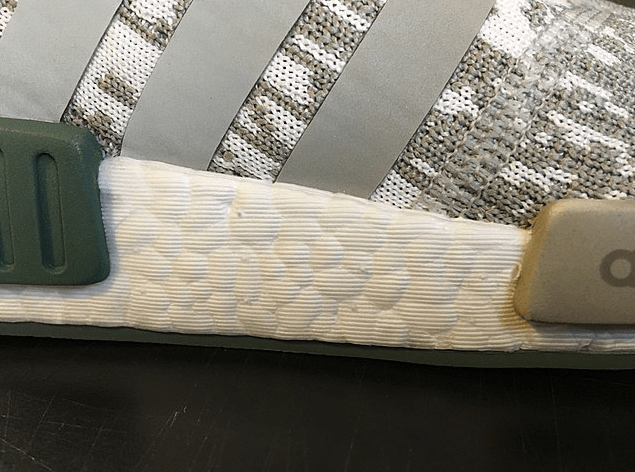Over the years since the introduction of the midsole cushioning technology in the 1970s, top sneaker brands like Nike and Adidas have been finding ways to improve the build and performance of their running shoes and performance sneakers. Most of them are focused on providing the best midsole cushioning to increase comfort and, most importantly, enhance the performance of the wearer, especially among runners, basketball players, and other athletes.
Today’s athletes have a pretty wide variety of performance sneakers to choose from. Their most important decision depends on how much cushioning is needed for optimum performance. Nike, Adidas, Puma, New Balance, Reebok, and other sneaker companies utilize their own proprietary cushioning technologies designed and developed to guide, stabilize, support, and energize the wearer’s feet.
Before that, sneaker cushioning was unheard of. Then the ethylene-vinyl acetate foam was invented – it is an elastic material resembling rubber. Nike was the first sneakers company to break the mold, introducing air as a cushioning technology in the 1970s. Asics introduced gel as its cushioning method in the 1980s and applied it to all of its athletic shoes. On the other hand, Adidas introduced its own Boost cushioning technology in 2013 that has made the company even more relevant in the sneakers world.
Other footwear companies like Under Armour, New Balance, and Puma have continued in trying to upgrading their EVA, creating and developing their own take on cushioning.
Check out the cushioning technologies adopted by some of the world’s biggest sneakers companies (the glossary of cushioning technology terms is arranged in alphabetical order):
Nike
Nike, so far, has the most versatile lineup of cushioning technologies on the market.
- Air-Sole – It has pressurized bags of air, coated with rubber, for added durability and improved cushioning.
- Lunarlon – It combines soft and firm foam cushioning to absorb shock and improve heel-to-toe impact transition.
- Max Air – It consists of small air-filled bags that replace parts of the midsole to minimize weight and provide improved impact response.
- Nike Dynamic Support – It features a strengthened midsole with a softer foam on the lateral side and a firmer sole on the medial side, to improve smoothness.
- Zoom – It consists of a thin, lightweight cushioning under the forefoot and heel, designed to provide shock absorption with minimal weight.
Adidas
- Boost – It is a foam cushioning technology designed for maximum energy return. It is softer than the regular EVA foam but has an impact response similar to PU (polyurethane, which is similar to EVA but heavier, denser, and more durable).
- Bounce – It consists of a soft foam midsole designed to deliver maximum elasticity. The “Three Stripes” company redesigned the Bounce technology before introducing the AlphaBounce line of performance running sneakers.
- Stableframe – It is a modified midsole designed to house the foot instead of sitting under it. It provides improved support and guides the foot safely through its stride.
- Ultraboost – Adidas improved their Boost technology with the Ultraboost. It features tiny capsules made of thermoplastic polyurethane (TPU), a sturdy and flexible material. These capsules are installed in the midsole to provide enhanced impact response. The Ultraboost maintains performance in both high and low temperatures and is more durable than the regular EVA.
New Balance
- Abzorb – For a long time, New Balance has experimented with upgrading its EVA. In the 1980s, it added PU to surround EVA for enhanced stability. In the 1990s, the company collaborated with Dupont to develop a blend of the latter’s isoprene rubber and New Balance’s proprietary foam materials, resulting in the Abzorb cushioning technology. It is designed to absorb shock and distribute energy, which keeps the wearer comfortable and protected from the rigors of impact.
- EnCap – This cushioning system consists of foam in the midsole with a tougher PU mold and the softer EVA cushioning foam inserted into the center of the midsole. This system is designed to provide better support and durability.
- Fresh Foam – It is a foam midsole consisting of three separate materials. This combination results in improved resistance and durability. It is also more responsive than RevLite (defined below) and promotes a significantly reduced drop from heel to toe.
- REVlite – New Balance employs this innovative cushioning technology consisting of a foam compound that provides the same durability and responsiveness of its foams 30% heavier. It results in a lightweight ride without compromising construction or sacrificing underfoot cushioning and stability.
Puma
- Ignite – Puma introduced its own cushioning system in 2015. It consists of a PU blend designed to provide maximum energy return, optimal rebound, and immediate and superior step-in comfort.
Reebok
- DMX – In this technology, the air runs through the shoe via connected bulbous pods to better distribute weight and support throughout the sole, therefore improving the wearer’s running performance. In 1997, Reebok launched the DMX Run, the first shoe to use such technology
- Floatride – It consists of a soft foam midsole that provides maximum cushioning without compromising impact response.
- PUMP – It consists of inflatable chambers fitted within the shoe. These inflatable chambers remain totally structure-less unless inflated or deflated, at which point creating a mold to mirror the shape of your foot for a seamless fit.
Asics
- Asics Gel – Introduced in 1986, the Asics Gel consists of a soft elastomer (gel) strategically placed in a solid construction for stability and durability. The Japanese sneakers maker has upgraded this technology no less than nine times since its debut, focusing on the gel’s size growth, its ability to absorb shock, weight reduction, improved durability, a move to the forefoot, and a softer composition.


